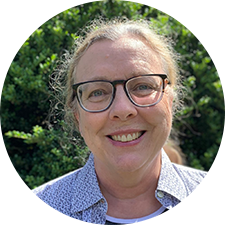Nancy Quam-Wickham
As part of our ATS workshop series, faculty from CSULB and beyond share case studies and key lessons learned from implementing new approaches in their teaching practice.

Dr. Nancy Quam-Wickham
Dr. Nancy Quam-Wickham is a Professor of History at CSULB. Her historical research interests emphasize the connections between environmental change and labor history. In areas of practice, over the last decade she has been involved in a number of state and national K-16 initiatives, including those of the American Historical Association (Participant, Tuning the History Degree; Advisory Board Member, History Gateways Initiative); Member, Measuring College Learning Initiative, Social Science Research Council; Disciplinary Advisor, John Gardner Institute for Excellence in Undergraduate Education; Campus Coach, National Institute for Learning Outcomes Assessment (University of Illinois); Panelist and Reviewer, History-Social Science, Instructional Quality Commission, California Department of Education. Additionally, NPR's Educate! podcast recently featured her work in the classroom
Insights on Using Technology in the Classroom:
There was once on this campus a great deal of concern about MOOCs (which I dismissed at the time) and there has been persistent resistance to online education in many departments, even though high-quality instruction in hybrid, flipped, and online ed can boost student success; these modalities provide access to courses that are otherwise unavailable to many students due to faculty scheduling preferences, facility availability, or enrollment pressures. My experiences both as a former department chair and in work external to this campus as an assessment expert led me to endorse the Quality Matters (QM) program. Because the QM program has explicit requirements for quality in online education, it mandates that instructors utilize learning outcomes-aligned pedagogies. Engagement (student-student, student-instructor, and student-learning materials) is privileged in QM. The QM standards also require that instructors demonstrate instructional currency; in other words, QM discourages faculty from using the same texts they’ve used for 20 years. The QM course approval requirements require transparency in instructional practices. My interests in improving student learning through professional development and instructional innovation is long-standing. Learning outcomes aligned models are proven to help improve equity and reduce achievement gaps in learning in higher education.
I completed the required QM trainings before CSULB formally adopted the QM program. As the QM site notes, the QM program is “faculty-centered, peer-review process designed to certify the quality of online courses and online components. The primary components of QM include a set of standards (rubric) for the design of online courses, a peer-review process for applying the standards to provide feedback for faculty in the continuous improvement of their online and blended courses, and professional development opportunities for faculty. The QM process certifies the design of courses as meeting shared standards of best practice.” Instructors must submit all course materials for peer-review by a committee of QM reviewers in order to be QM certified. My summer 2019 course was aligned with QM standards, and I expect my 2020 course will be QM certified.
The primary purpose of QM is for faculty professional development to ensure quality in online course offerings. In the last decade, on a national level, assessment of student learning in higher education has changed from focusing on compliance (meeting accreditation and/or annual reporting requirements) to focusing on practices that lead to improvements in student learning. Learning outcomes-aligned instruction is part of this larger trend, so the QM program parallels these national changes in ways that are not always evident elsewhere on this campus. On an individual level, students enrolled in my learning outcomes-aligned courses (both online and in ALCs) outperform their peers nationally, by orders of magnitude, on knowledge of historical thinking and course content (as measured by normed assessment tools provided by the publisher).




